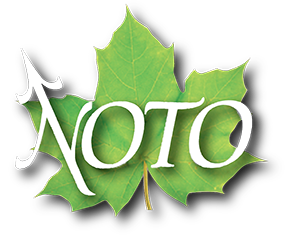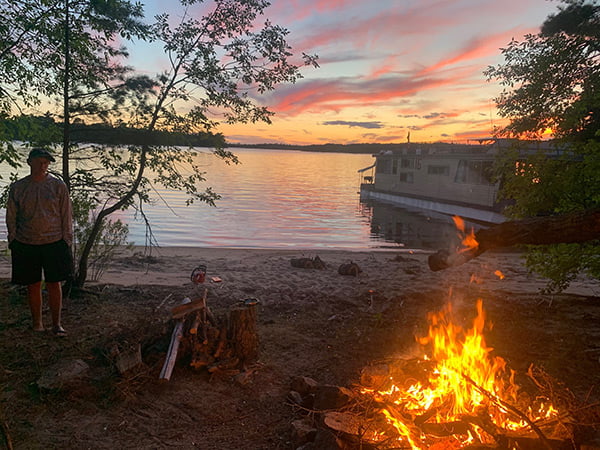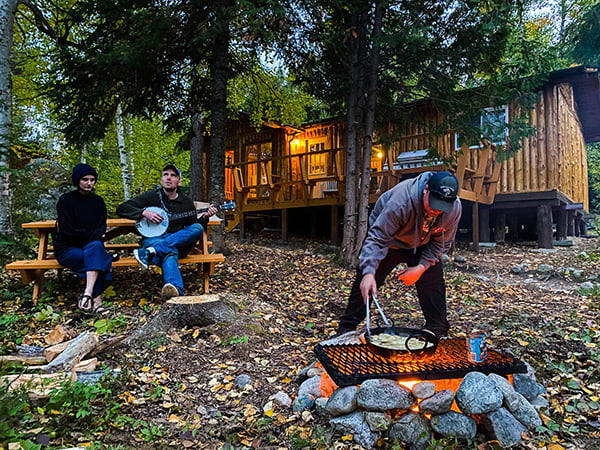If you think your outpost cabin or lodge is vulnerable to forest fire, you’re right. However, you can take steps to protect your property from wildfire, and it’s not as hard as you might think. For years, Ontario’s Ministry of Natural Resources & Forestry has been providing information on how to protect your forest home from wildfire by taking a educated look at your surroundings and removing potential fire hazards. By creating a defensible space around your structures, you will provide firefighters with a better chance to defend it against oncoming wildfires.
Some Fire-Safe Landscaping Tips for Creating a Defensible Space:
- Create at least a 10-metre wide clearing around your buildings
- Trim the branches on all trees within your clearing to a height of three-metres
- Clear a one-metre strip around each building, down to bare mineral soil
- Keep your grass watered and cut, and remove dead grass
With a well-planned defensible space, you can reduce the severity of the wildfire when it reaches your property. By carefully choosing your design and construction materials when you build, the odds of your structure surviving a wildfire get even better. A well-designed structure can withstand radiant heat and burning embers.
Some Construction Tips for Building a Fire Resistant Structure:
- Metal roofing provides better protection than asphalt or cedar shingles
- Use stone, brick, stucco or metal siding for exterior surfaces
- Enclose the space under structures with fire-resistant materials
- Use dual or triple pane windows to reduce radiant heat transfer
- Screen in all vents with wire mesh no larger than 6-mm in size
- Install a permanent sprinkler system
As people invest time and money building structures in the forest, they must understand that there is a risk associated with this. The best possible strategy for dealing with the risk of wildfire is to build with fire-resistant materials in a fire-safe area and install a permanent sprinkler system. On a hot, windy day when the forest is dry, fire can spread so quickly that it can reach your location before waterbombers and crews arrive. This is when the time and money you invested on your sprinkler system can save your property.
If a wildfire appears as though it could threaten a structure, and if there are resources available, MNRF will attempt to protect the structure by installing a temporary sprinkler system. Once in place, the fire pump will be started and allowed to run for several hours before the wildfire reaches the site. By soaking the area with water, the fire will lose its intensity once it reaches the moisture and, in almost every case, the structure will be spared as the fire passes by or over it.
In the past, there have been times when there was so much fire activity that the staff and equipment simply weren’t available to protect every structure in the path of every fire. This is where you can make a difference by taking steps to prepare for the day a fire arrives on your doorstep.
Tips to Protect Your Guests
All operators should develop a Fire Safety Plan for your building or properties. Key issues that need to be addressed in a Fire Safety Plan include:
- Emergency procedures to be used in the event of a fire,
- Organization and training of staff to carry out fire safety duties,
- Identification and control of hazards in and around the buildings on your property, and
- Maintenance of building facilities and equipment.
As your business changes or grows, your Fire Safety Plan needs to be revised accordingly in order to reflect the current situation. As many tourist operators are located in areas where there is limited or no response capabilities from a fire department, due diligence dictates that all necessary precautions should be taken to prevent fires from occurring. The safety and well being of your clients and protection of your investment are not mutually exclusive. Preparing and implementing an effective Fire Safety Plan will identify and address fire risks and prepare staff and guests to react quickly and appropriately in the event that a fire does occur.
Related Information:
- For more information about the FireSmart Program, please click here.
- Click here to see the current active forest fires, fire restriction zones, and forest fire danger ratings.
- To report a forest fire, and for additional forest fire information, please click here.
- For additional emergency preparedness tips, please click here.




 Every year people and property are threatened by wildland fires. Many of these fires occur in areas called the urban interface zone where homes, cottages and subdivisions are built into the forest landscape. In order to assist land owners in remote areas of Northern Ontario learn how they can best protect their properties from burning wildfires, the Ministry of Natural Resources and Forestry (MNRF) has partnered with NOTO to communicate the FireSmart approach.
Every year people and property are threatened by wildland fires. Many of these fires occur in areas called the urban interface zone where homes, cottages and subdivisions are built into the forest landscape. In order to assist land owners in remote areas of Northern Ontario learn how they can best protect their properties from burning wildfires, the Ministry of Natural Resources and Forestry (MNRF) has partnered with NOTO to communicate the FireSmart approach. Tips on How to Be FireSmart
Tips on How to Be FireSmart